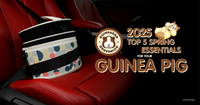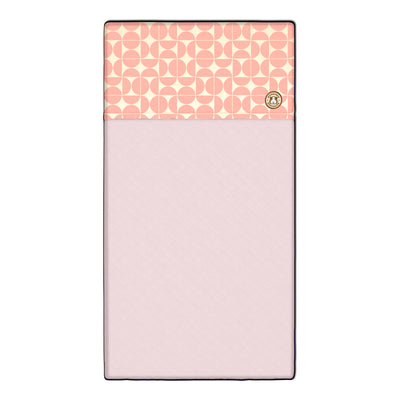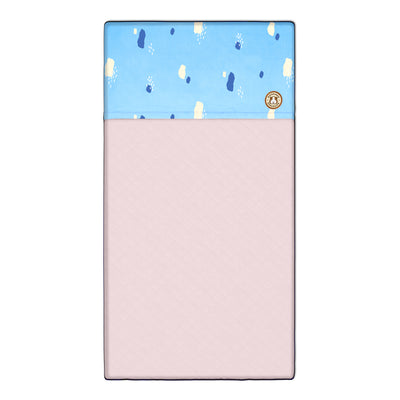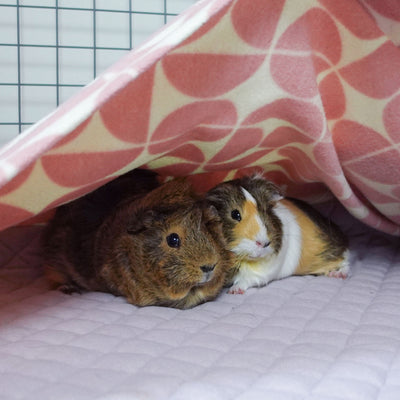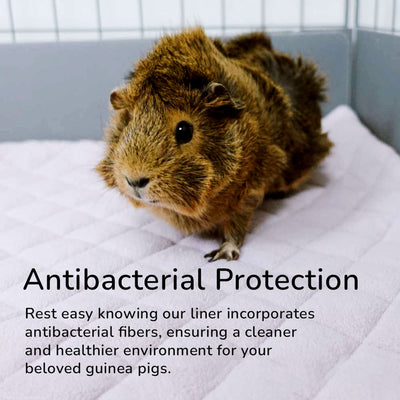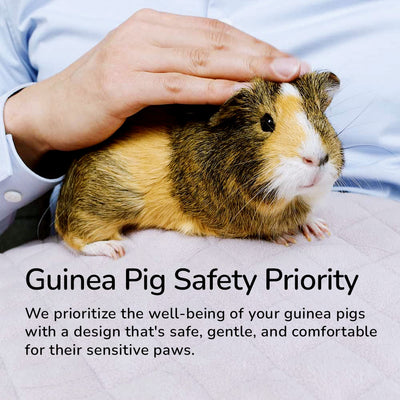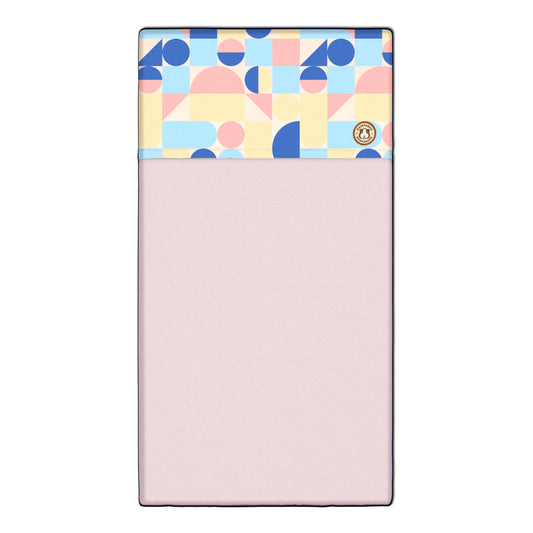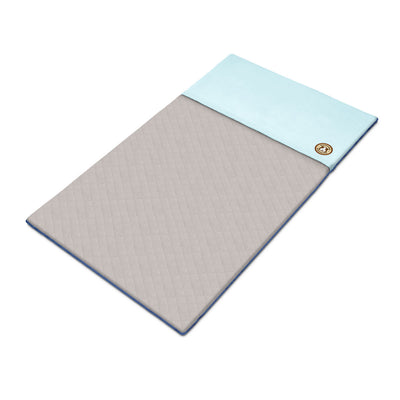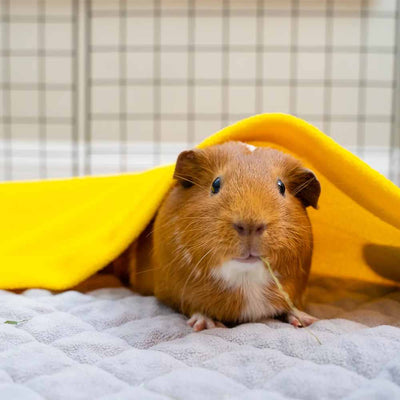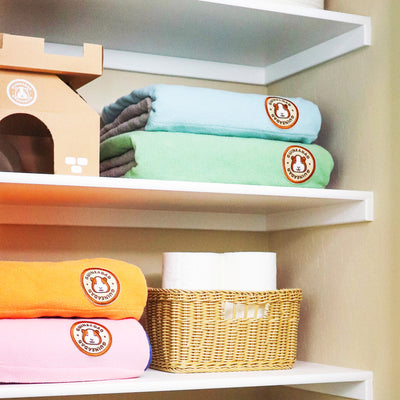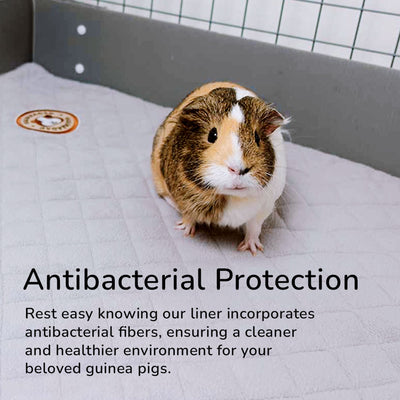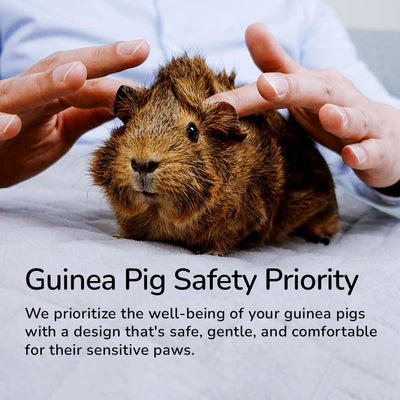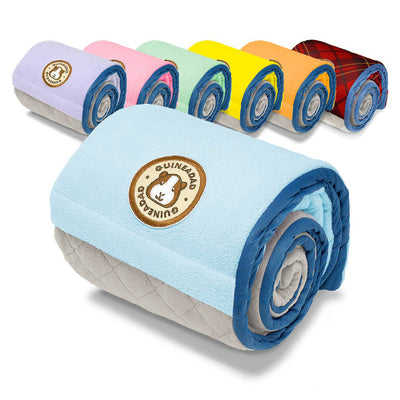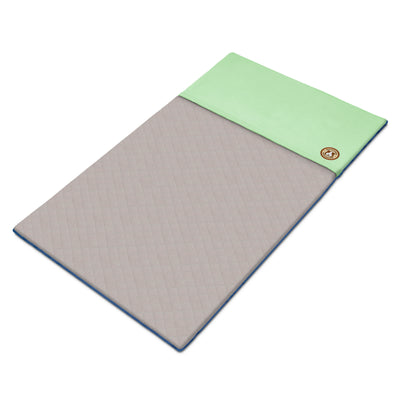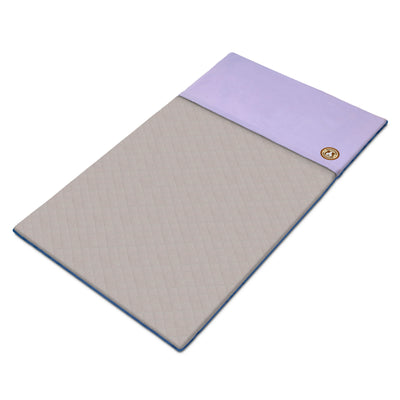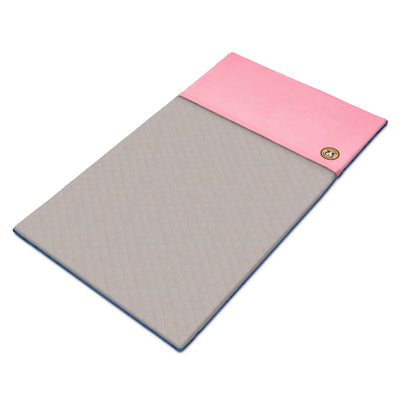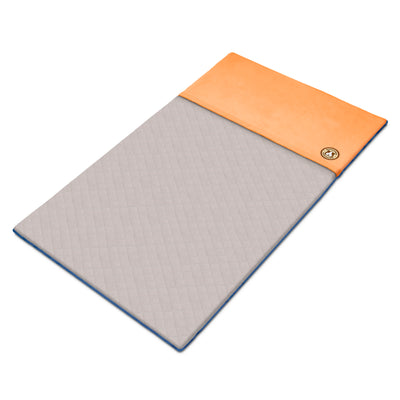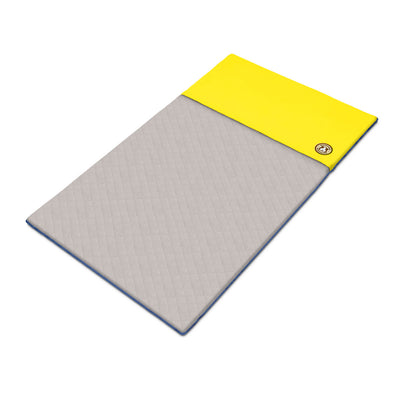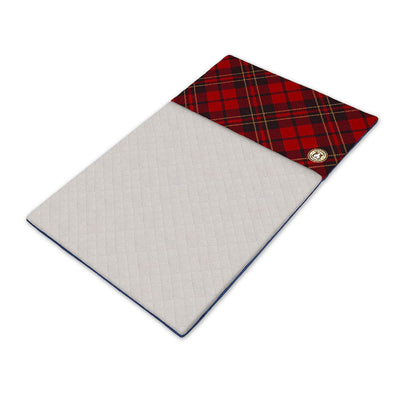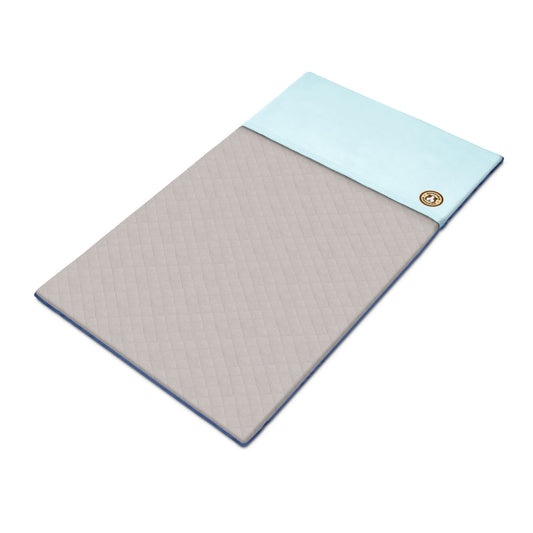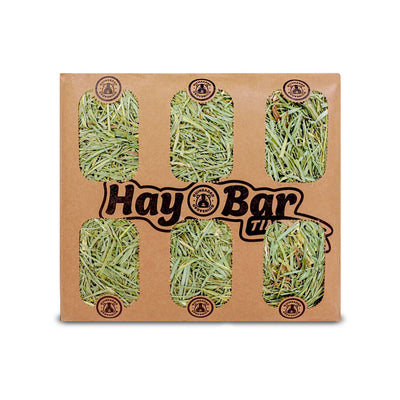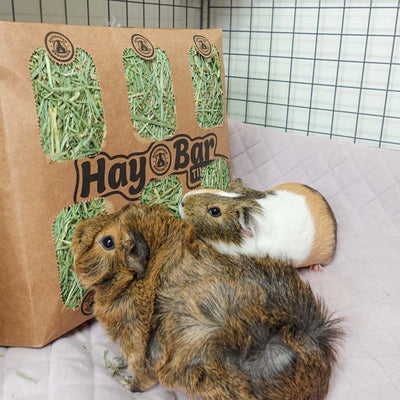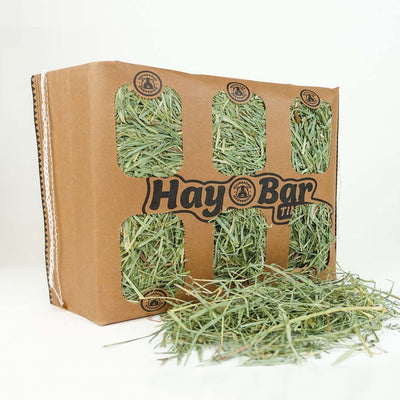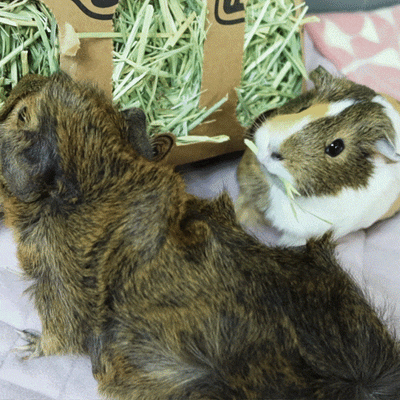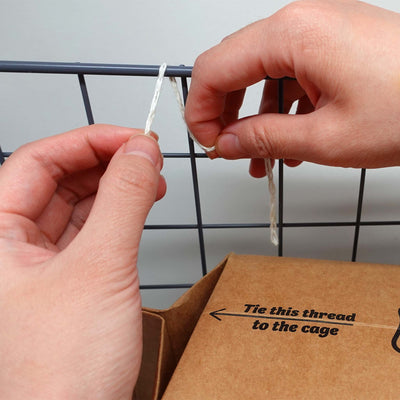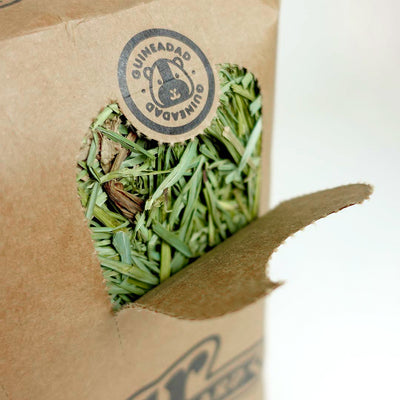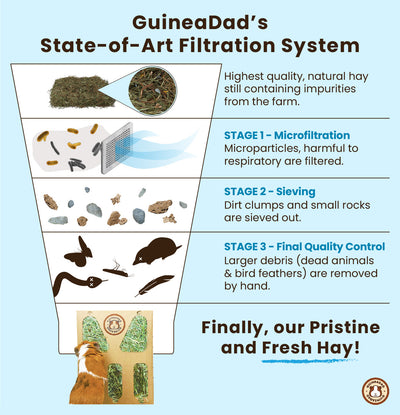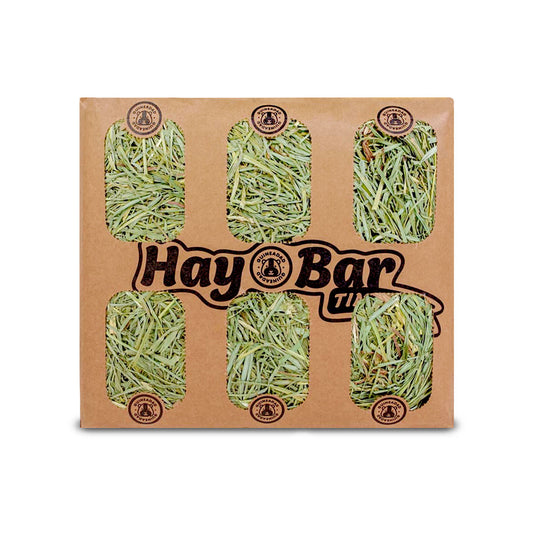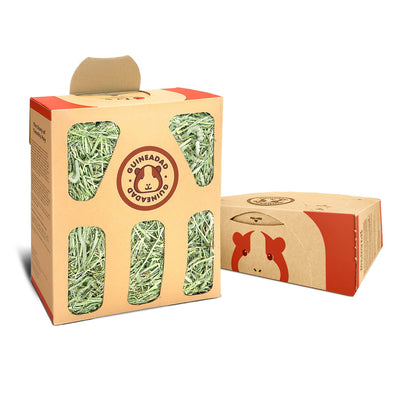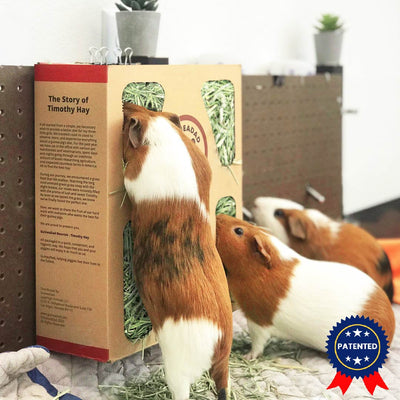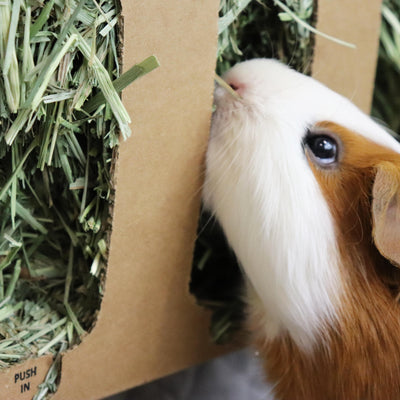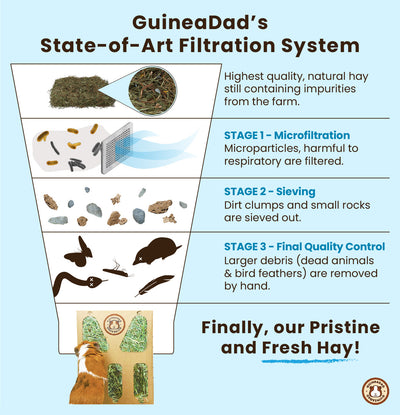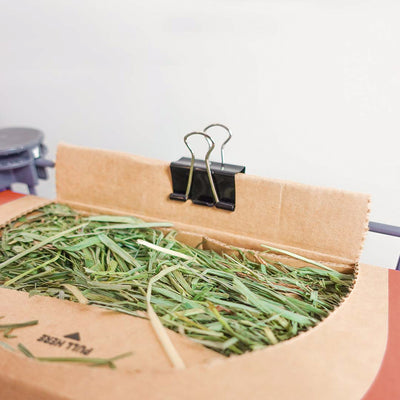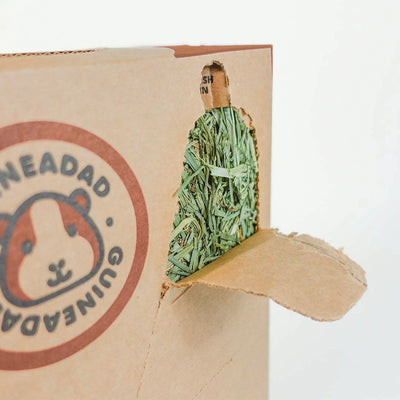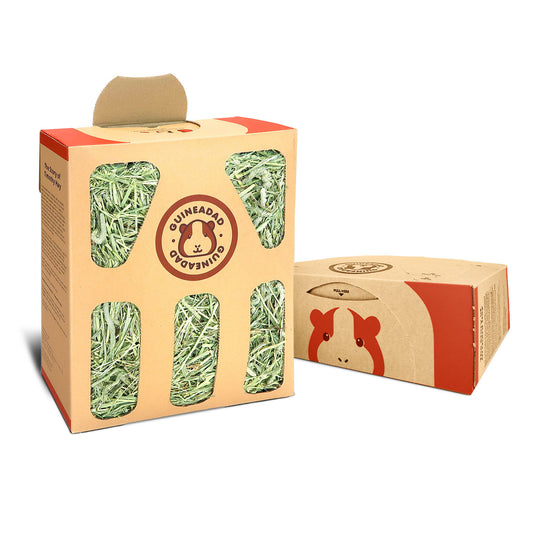Hey GuineaGang!
Like all animals, there are certain health issues that guinea pigs are going to be more susceptible to than others. With the aim of minimizing our pets' chances of suffering and illness wherever possible, it behooves us to take as many preventative measures as we can, as well as regularly observing our guinea pigs and their environments for any signs of potential problems.

One very distressing and potentially life-threatening condition that poses a real threat to guinea pigs is flystrike, or myiasis. Flystrike often occurs in areas near animal waste, as flies are drawn to the waste as a food source and breeding ground, so farm animals and small pets can be especially at risk.
What is Flystrike in guinea pigs?
When myiasis occurs, the flies lay their eggs on or near the animal's skin. The eggs then hatch into maggots, and the maggots begin to burrow, seeking warm, moist places like eyes, open wounds, or damp fur, most commonly on an animal’s rear end.
The maggots then eat away at the animal’s flesh, causing severe pain and discomfort. Flystrike can be dangerous and painful for any animal, but flystrike in guinea pigs can be especially dangerous due to their small size.
Flystrike is a serious and potentially life-threatening condition that requires immediate veterinary attention. Pets that struggle to groom themselves due to old age, arthritis, or dental issues, are especially at risk, and soiled bedding is also a common, yet avoidable means of larval gestation and transmission. 
Just like bacteria, fly larva and other parasites thrive in warm and damp places, so it’s imperative to provide a clean and dry living space for your pets. In addition to regularly grooming and physically inspecting your animals, spot cleaning your guinea pigs’ bedding daily, and thoroughly washing it with detergent at least once a week is the best way to keep your guinea pigs safe, and their homes free from maggots and other parasites.
Here are some key points to know about flystrike in guinea pigs:
Causes: Flystrike is usually caused by flies, such as blowflies, laying eggs in soiled or moist fur, especially around a guinea pig's rear end or any open wounds. The flies are attracted to the smell and moisture of urine, feces, and blood.
Risk Factors: Guinea pigs are most at risk for flystrike when they are kept in dirty or unsanitary conditions, have long, tangled or dirty fur, have open wounds or injuries, or are suffering from diarrhea.
Symptoms: Guinea pigs with flystrike may exhibit signs such as restlessness, discomfort, excessive scratching or grooming, chewing on the bars of their cage, and reluctance to eat. Upon close inspection, you may see maggots on or near the affected area, and there may be a foul odor.
Treatment: If you suspect your guinea pig has flystrike, it's crucial to seek immediate veterinary care. The vet will remove the maggots, clean the affected area, and may prescribe antibiotics or other medications to treat any infections. In severe cases, surgical intervention may be necessary to remove damaged tissue.
Prevention: As is the case with any health condition, prevention is preferable to treatment. To help prevent flystrike guinea pigs need their cages, bedding, and fur to be kept clean and dry (especially around their rear ends).
Trim long fur, particularly around the hindquarters, to avoid tangles or areas where moisture could be trapped. Check your guinea pig daily for any signs of illness or injury and maintain good hygiene in their living environment.
Plenty of water, exercise, and a fibrous diet of high-quality Timothy hay are the best ways to help a guinea pig maintain proper gut health and regulate digestion.
Fly Control: Consider using bug screens in the area where you keep your guinea pig to reduce the risk of flies entering their living space. Additionally, you can use natural fly repellents but be wary of using insecticides near your guinea pigs, as they can be harmful to your pets’ lungs. It’s always best to consult your vet before use.
To reiterate, there are several risk factors that increase a guinea pig's vulnerability to flystrike. Poor cage hygiene, where soiled bedding and accumulated waste attract flies, is a significant factor. Guinea pigs with long or dirty fur are more susceptible, as are those with open wounds or injuries that can provide an entry point for fly eggs. 
Additionally, diarrhea can exacerbate the risk due to its potential to soil the fur and create a moist environment conducive to fly infestation. Therefore, maintaining a clean living space for guinea pigs, regular grooming, and promptly addressing any wounds or health issues are essential preventative measures to reduce the chances of flystrike occurrence.
Recognizing the Signs and Symptoms of Flystrike in Guinea Pigs
Recognizing the signs and symptoms of flystrike is crucial for early intervention and the well-being of your furry companion.
-
Restlessness and Discomfort: One of the earliest signs of flystrike in guinea pigs is restlessness and discomfort. You may notice your guinea pig becoming more agitated, frequently shifting position, chewing anxiously on the bars of their cage, or displaying other signs of unease.
-
Excessive Scratching and Grooming: Guinea pigs with flystrike often exhibit increased scratching or grooming behaviors, particularly around the affected area. They may try to alleviate the discomfort caused by the maggots by biting or licking themselves excessively.
-
Reluctance to Eat: As the condition progresses and the guinea pig's health deteriorates, they may become reluctant to eat. A decrease in appetite is a concerning sign and should not be ignored.
- Foul Odor: Flystrike is accompanied by a foul odor due to the presence of maggots feeding on the guinea pig's flesh. If you notice an unusual and unpleasant smell emanating from your pet, it may indicate a problem.
- Visible Maggots: In some cases, you may be able to see maggots on or near the affected area. Maggots are typically white or cream-colored and can be found in the fur, particularly around the rear end, where flies are most likely to lay their eggs.
- Open Wounds or Lesions: Flystrike often occurs in conjunction with open wounds or skin lesions. These wounds can provide a convenient entry point for fly eggs, and the presence of maggots exacerbates the injury.
About Flies and the Effects of Flystrike:
Be Aware of the signs of flystrike and check your pets frequently: Pets being unusually quiet & lethargic, refusing food & drink, having a strong smell coming from their hutch, or digging into corners for pain relief can be symptoms for a number of different issues, but they always warrant a physical inspection and a call to your vet. 
When examining your pet, look for maggots and flies on their bodies, as well as around their living space and any nearby bedding, hideouts, or carpets. When in doubt, it never hurts to give your pets bedding an extra wash, and remember that flystrike can be fatal if left untreated.
If you observe any of these signs or suspect your guinea pig may have flystrike, it is essential to act swiftly:
Treatment
- Isolate Your Guinea Pig: Remove the affected guinea pig from its cage and place it in a clean, safe, and warm environment.
- Do Not Attempt to Remove Maggots: It can be tempting to try and remove maggots yourself, but this can worsen the situation and potentially harm your pet. Leave maggot removal to a veterinarian.
- Seek Immediate Veterinary Care: Contact your veterinarian or an emergency veterinary clinic immediately. Flystrike is a medical emergency, and professional intervention is necessary to treat the condition and provide pain relief.
About Flies and the Effects of Flystrike:
-
Fly Species: The most common flies associated with flystrike in animals are blowflies, such as the green bottle fly (Lucilia sericata) and the sheep blowfly (Lucilia cuprina). These flies are attracted to the odor of decaying organic matter, including wounds and soiled fur.
-
Attraction to Wounds: Flies are attracted to wounds, open sores, or damp, soiled fur on animals. They are drawn by the scent of bodily fluids and the warmth of the affected area.
-
Egg Laying: Female flies lay their eggs in or around the affected area. These eggs can hatch within hours, depending on environmental conditions.
-
Maggot Development: Once the eggs hatch, the maggots feed on the animal's flesh and secretions, causing tissue damage. They produce enzymes that help break down the tissue, making it easier for them to feed.
-
Tissue Damage: As the maggots feed and grow, they create deep, painful wounds. This can lead to infection, tissue necrosis, and systemic illness in the affected animal.
-
Lifecycle: The maggots go through several developmental stages (instars) before pupating and eventually emerging as adult flies. This cycle can take a matter of days to complete.
-
Host Susceptibility: Some animals are more susceptible to flystrike than others. Factors that increase susceptibility include poor hygiene, advanced age, obesity, and certain medical conditions that may limit an animal's ability to groom itself or heal wounds.
-
Avoid flystrike by keeping your pet and their bedding clean and dry. Check their rear end and fur regularly (incontinence can attract flies). A fibrous diet including high-quality Timothy hay, vegetables, and fresh water is needed so the digestive system produces caecal (soft poops) they can eat.

Prevention and management of flystrike in animals involve strategies like:
-
Good Hygiene: Keeping animal living spaces clean and dry can reduce the risk of flystrike. Regularly remove feces and soiled bedding.
-
Shearing: In the case of wooly animals like sheep, shearing can help reduce the risk of flystrike by removing excess wool that can trap moisture and provide an ideal environment for flies. Some of the shaggier or curly haired breeds of guinea pigs like the Alpaca guinea pig, the Lunkarya guinea pig, or the Sheba guinea pig might benefit from keeping the hair shorn around the affected area.
-
Fly Control: Employing fly control measures, such as fly traps, insecticides, and fly repellents, can help reduce the fly population in the vicinity of animals.
-
Wound Care: Promptly treating and cleaning any wounds or injuries on animals can help prevent flies from laying eggs on them.
-
Veterinary Care: Seek veterinary assistance if an animal is suspected to have flystrike. Treatment may involve wound cleaning, maggot removal, and antibiotic therapy.

Understanding the biology and behavior of the flies responsible for flystrike is essential for developing effective prevention and management strategies. Flystrike is a painful and potentially fatal condition for guinea pigs, so it's essential to be vigilant about their health and hygiene.
Regularly inspect your guinea pig's coat, especially in warm weather when flies are most active, and seek prompt veterinary care if you suspect any issues. When selecting the best bedding for your guinea pigs, making sure it's fast drying, anti-microbial, and easy to clean is the goal. This is directly why the Premium GuineaDad Liner was invented. 
Recognizing the signs and symptoms early is crucial for successful treatment and the well-being of your beloved pet, though preventative measures, such as keeping their living area clean and dry, are the best defense against flystrike in guinea pigs.
Regular monitoring of your guinea pigs’ health, helping them maintain good personal hygiene when necessary, keeping their homes and bedding clean and dry, and seeking immediate veterinary care when needed are all essential steps in preventing your pets suffering from flystrike. Your vigilance and care will make all the difference in your guinea pigs’ quality of life.
Stay safe out there, GuineaGang!
- GuineaDad








